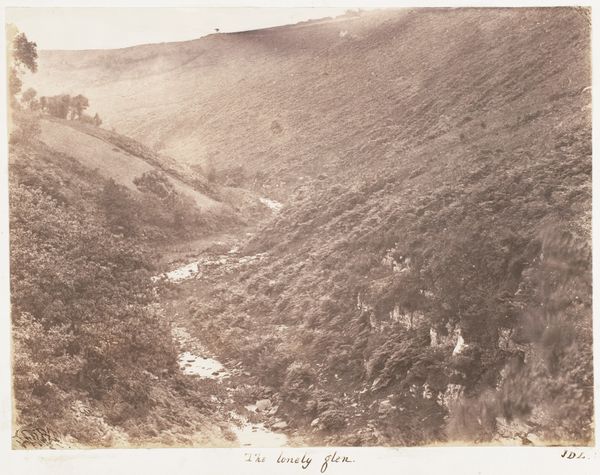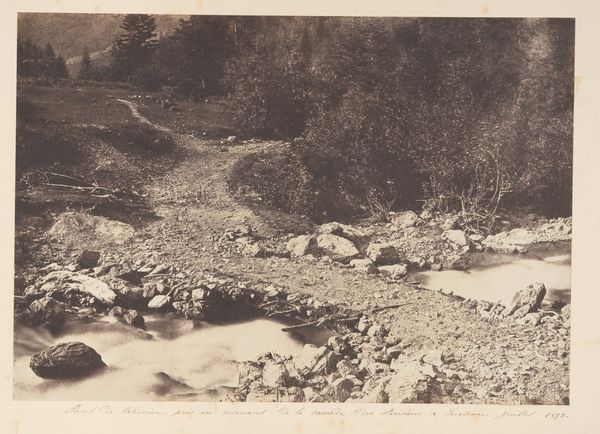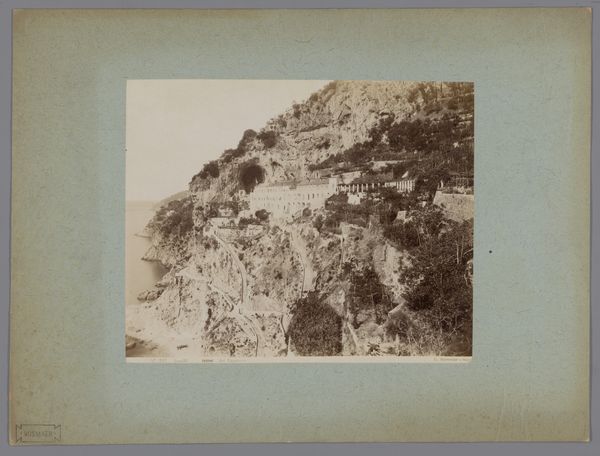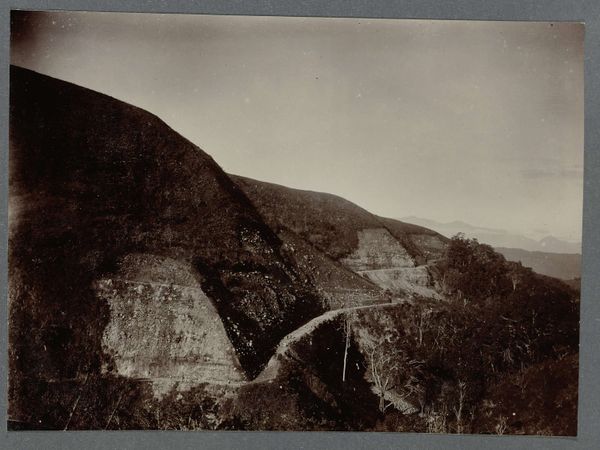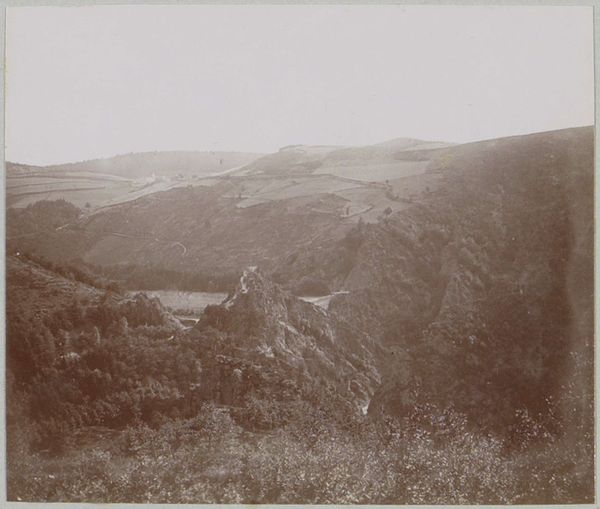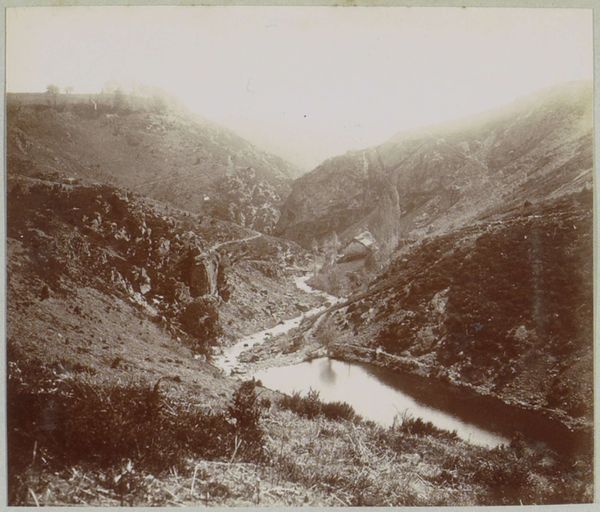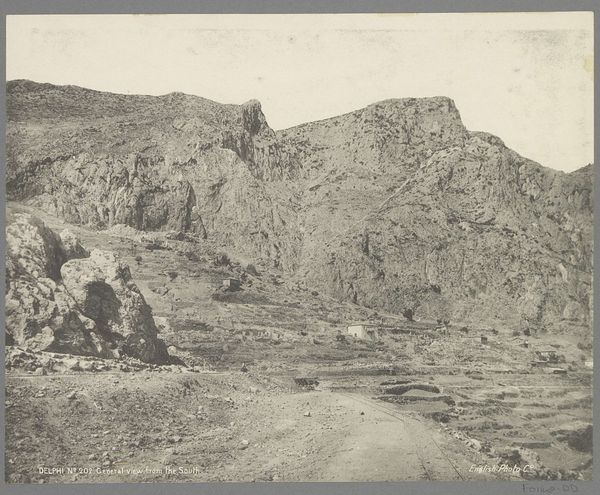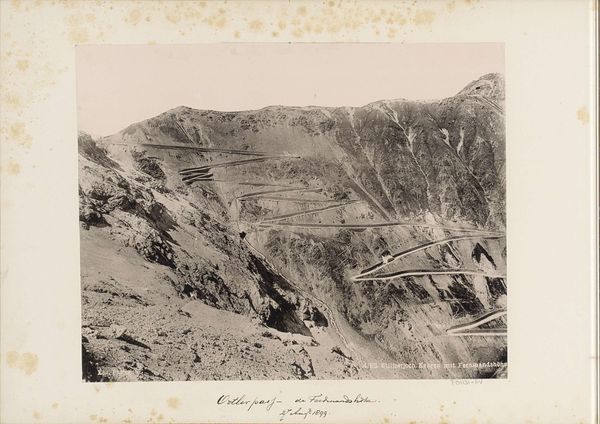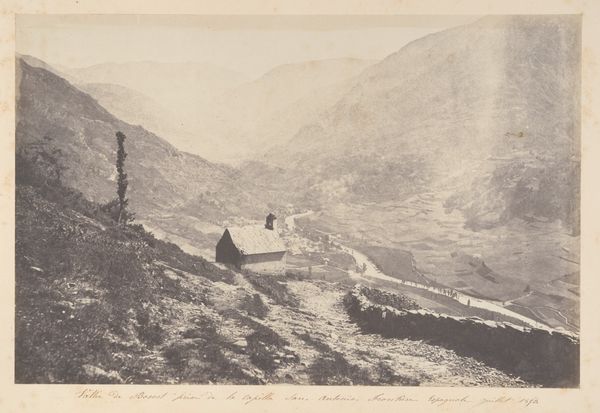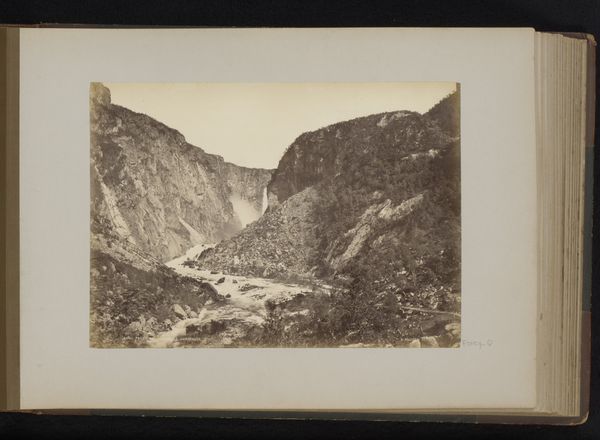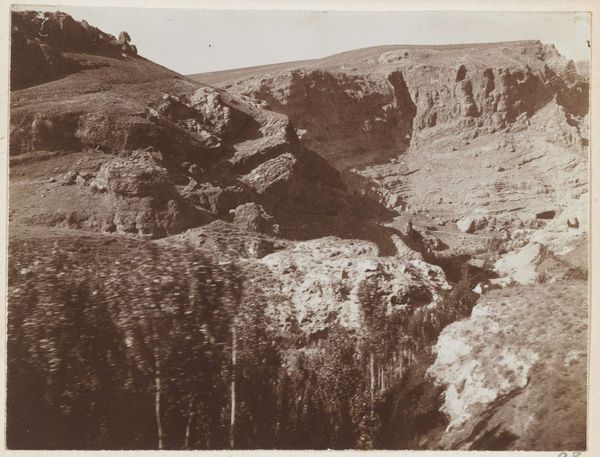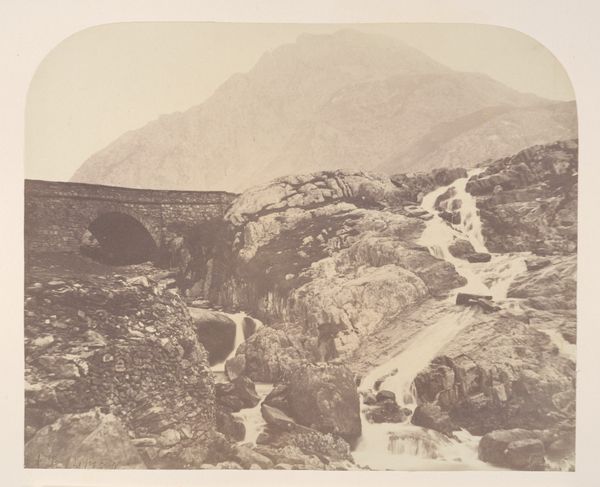
On the Road to Watersmeet, near Lynton, North Devon 1856
0:00
0:00
Copyright: Public Domain
Editor: So, this is Arthur Julius Pollock’s photograph, "On the Road to Watersmeet, near Lynton, North Devon," taken in 1856. It’s a sepia-toned image of a road winding through a valley. I’m struck by how remote and untouched the landscape seems. What’s your take on this piece? Curator: It’s interesting to consider this work within the context of Victorian England's evolving relationship with nature. Photography at this time was deeply intertwined with notions of progress and colonialism. While this appears to be a simple landscape, ask yourself: whose road is this? Who has access? How does it serve expanding networks of power? The romantic portrayal obscures the labor and social structures that enabled its creation and purpose. Editor: I hadn’t thought of it that way. I was just seeing a pretty picture of nature. Curator: Exactly. Think about the romantic movement and its fascination with the sublime in nature. But for whom was this sublimity accessible? The growing industrial class of the time needed "wild" spaces like these to get away from the urban environment. This photograph then speaks not just of nature itself, but of a constructed idea of nature, fueled by capitalism and class division. How does it make you reconsider the image? Editor: It adds a layer of complexity that I wasn’t initially aware of. Seeing it now, it feels like a curated experience, less about untouched wilderness and more about controlled access. I also think about how the framing highlights certain routes and maybe ignores others, pushing a specific point of view. Curator: Precisely. It becomes a question of who is defining this 'natural' space and for what ends. The image speaks volumes about power, access, and the gaze. Editor: I see what you mean! I am grateful for the help seeing that roads often serve multiple purposes - exploration, connection, extraction. It's not just a scenic view, but a sign of intersectional narratives involving land use. Thanks for this critical look. Curator: Indeed. It serves as a reminder of how art can both reflect and shape societal values and structures.
Comments
No comments
Be the first to comment and join the conversation on the ultimate creative platform.
